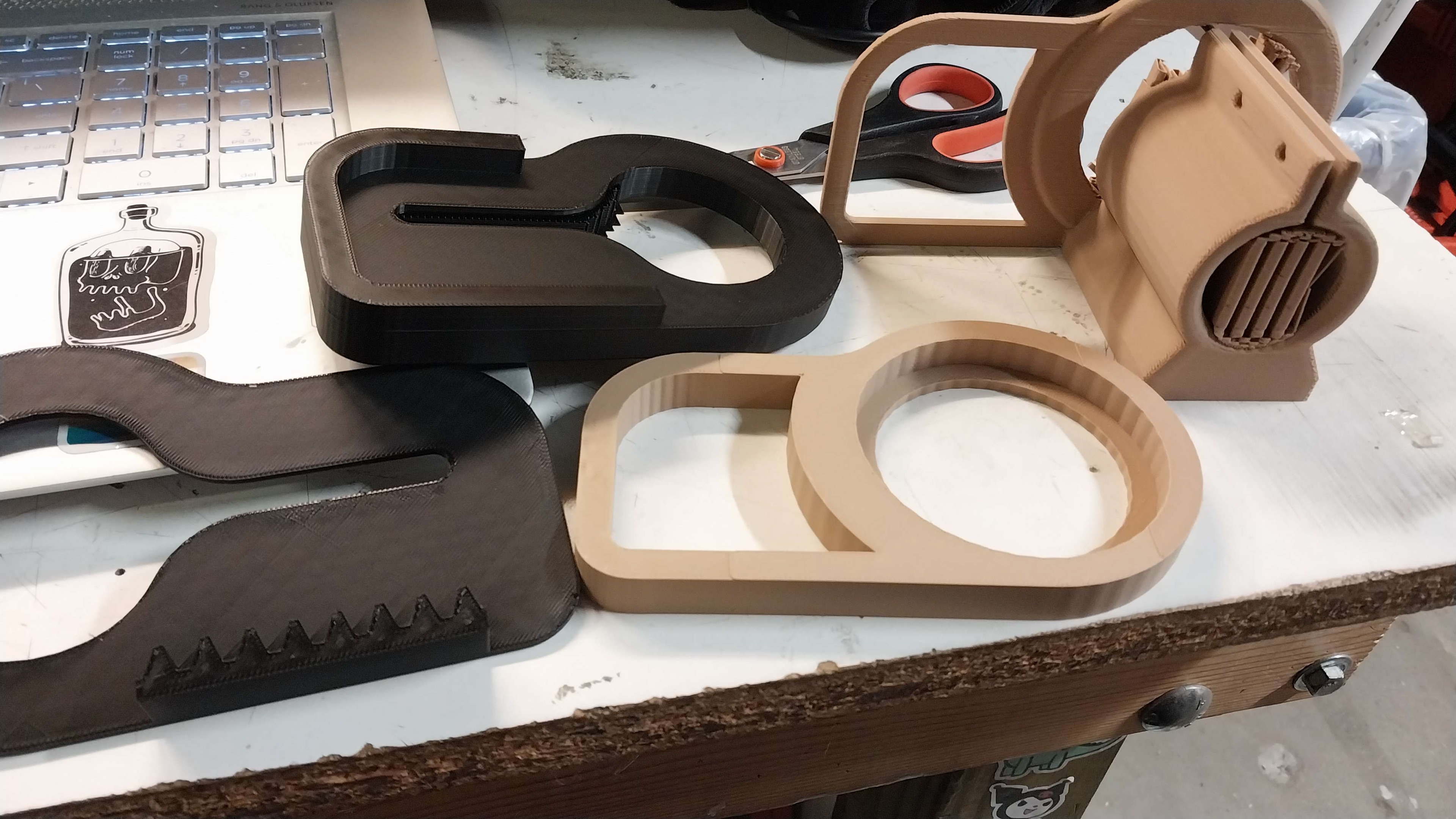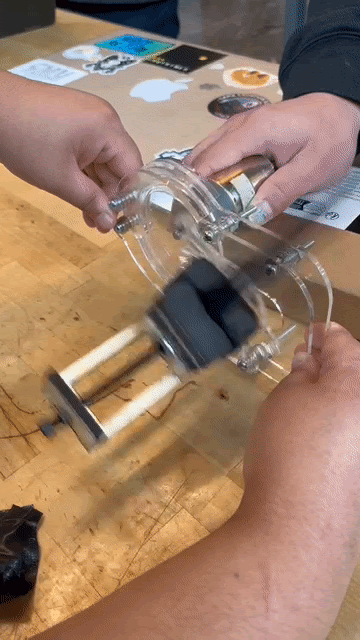I was responsible for gantry and carriage CAD + FEA analysis, stepper motor programming, and prototyping using 3D printed parts.
Final Prototype
We set out to create a solution that would take care of the manual labor associated with cleaning used paint brush heads, a task we observed on average took artists around 3-4 minutes to complete per brush (artists will go through multiple brushes per painting session, meaning an additional12 to 20 minutes of cleanup after every session). Brush heads, if not cleansed thoroughly, will be damaged permanently by the dried paint, meaning that artists absolutely cannot rush through this step, or else risk losing an expensive piece of equipment.
We designed a product that would automate this process from start to finish.
Design criteria included:
- The ability to hold and clean multiple brushes at once
- Automatically flush in and out clean/dirty solvent
- Use corrosive-safe material to allow use with turpentine
- Dry brushes at the end of the cleaning cycle
- Maintain the longevity of the bristles without damaging them
How it works
1. Brushes are clamped in using our ratchet mechanized holder
2. The gantry system is swept back and forth from the timing belt
3. The gantry stepper provides rotational motion to keep bristles against mesh surface and prevent any unwanted bending
4. The brushes are swept over the mesh to provide agitation, the solvent is flushed in by a solenoid to dissolve the paint
5. After a cycle that lasts around 4 minutes, the used solvent is flushed out, and the brushes are rotated and suspended midair to dry. This action also prevents the brushes from sitting atop the mesh for a prolonged period of time and causing permanent deformation in the bristles.
The entire system runs off a single Arduino Mega, 12V power supply, and driven on two DRV8825 drivers.

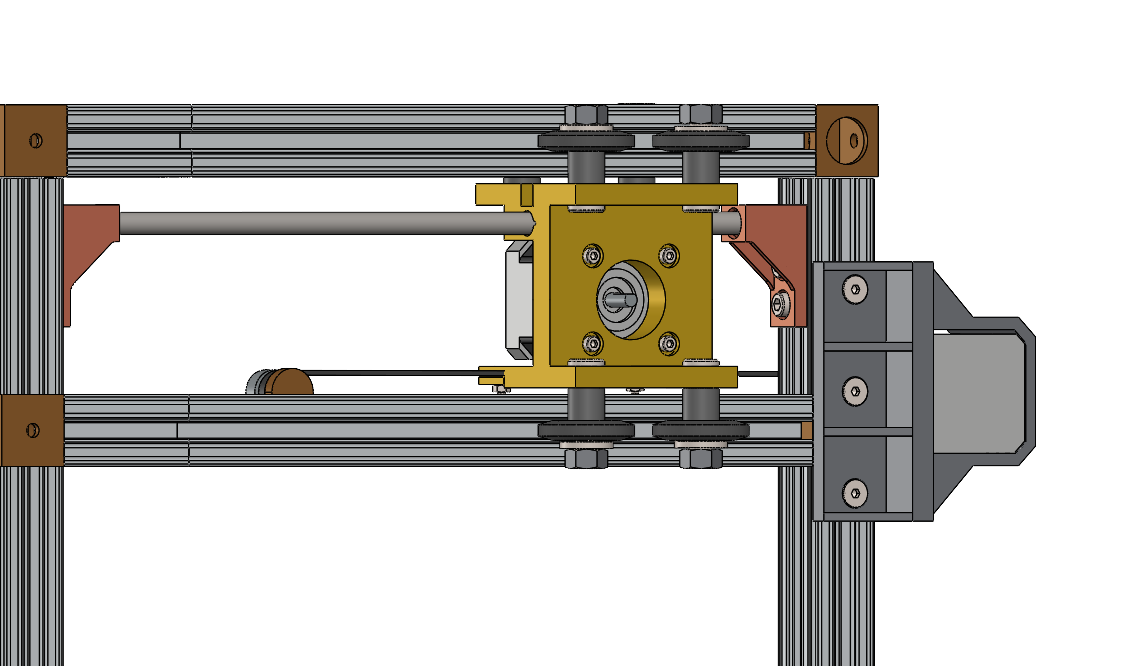
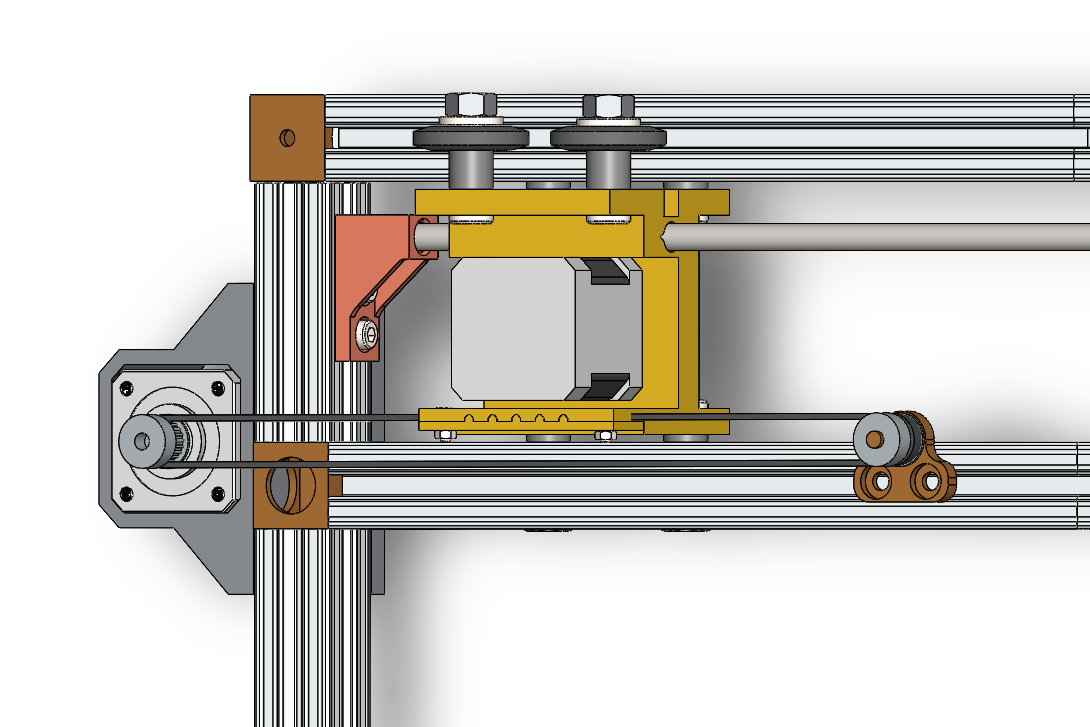
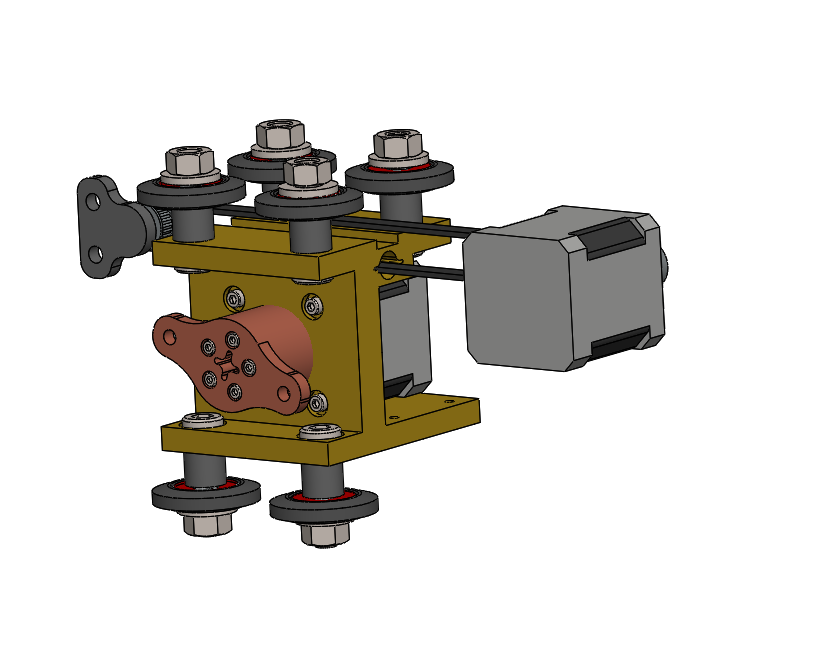

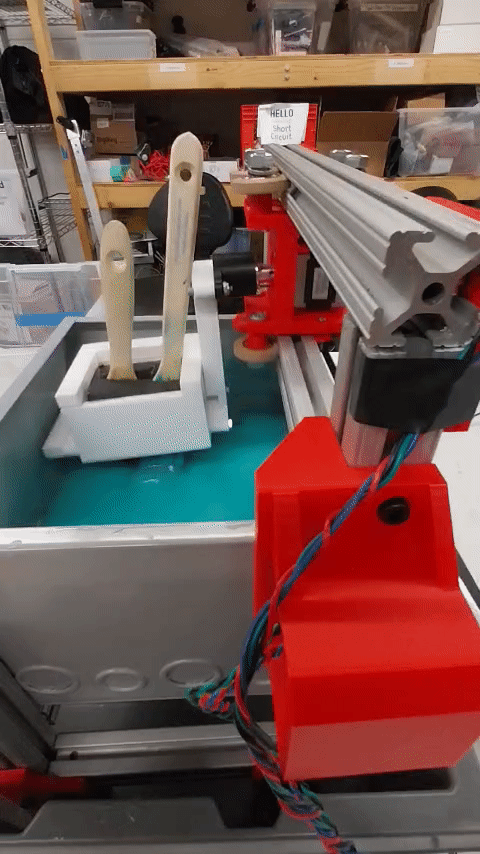
Prototype 2 & 1
Our initial design exploration focused on relying on the continuous rotational force of a DC motor and transform it into a predictable sweeping translational motion using a rack and pinion system. This motion would provide the motion necessary for the clamped brushes to be agitated against a textured surface and release the paint particles off the bristles
